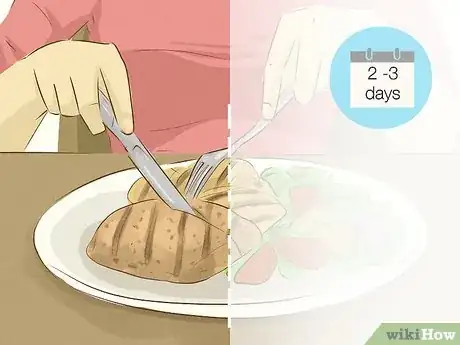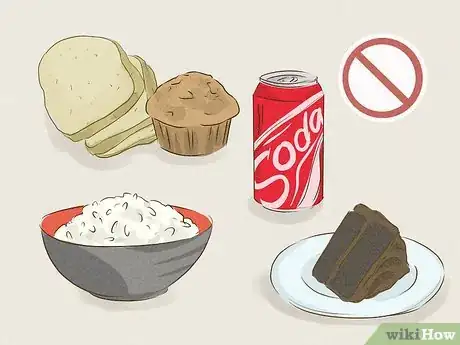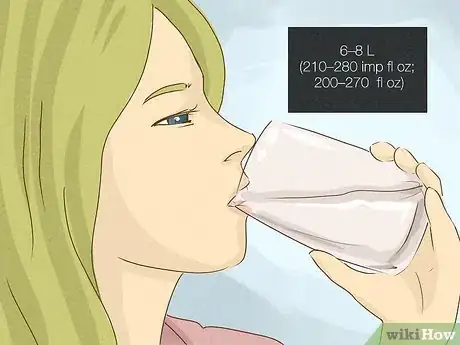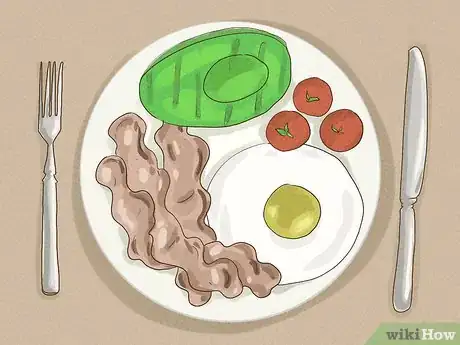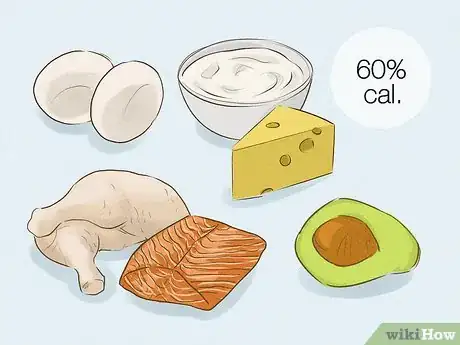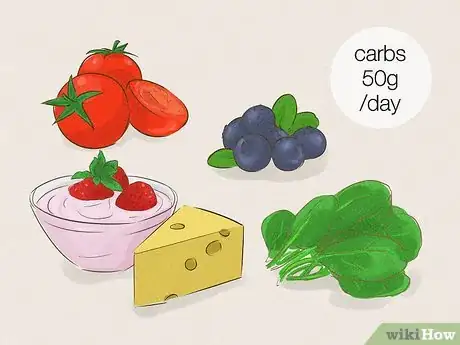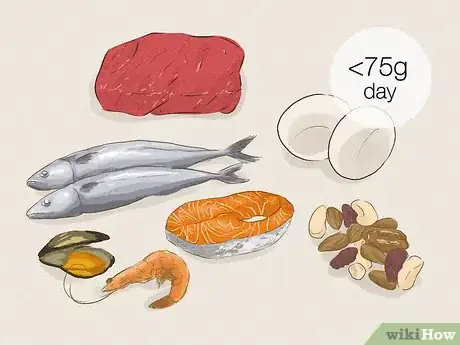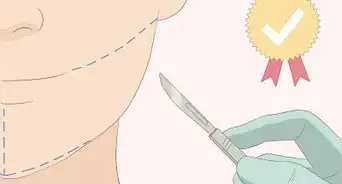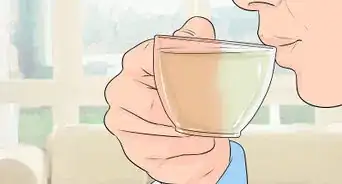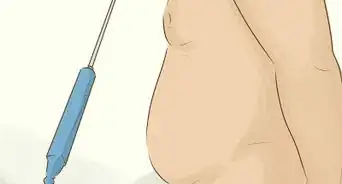This article was medically reviewed by Luba Lee, FNP-BC, MS. Luba Lee, FNP-BC is a Board-Certified Family Nurse Practitioner (FNP) and educator in Tennessee with over a decade of clinical experience. Luba has certifications in Pediatric Advanced Life Support (PALS), Emergency Medicine, Advanced Cardiac Life Support (ACLS), Team Building, and Critical Care Nursing. She received her Master of Science in Nursing (MSN) from the University of Tennessee in 2006.
There are 11 references cited in this article, which can be found at the bottom of the page.
This article has been viewed 12,597 times.
Ketosis is a state where your body burns fat instead of glucose for energy, making it a popular condition for weight loss. Your body enters ketosis when you follow a keto diet of very low carb and high fat intake. However, it’s also a difficult state to maintain and can take several weeks of dieting to enter. If you’ve slipped out of ketosis, the quickest way to re-enter it is with a 36-hour fast to burn off any glucose in your body. You can also get back into ketosis a bit slower by sticking to a strict keto diet for a few days.
Steps
Fasting to Enter Ketosis
-
1Set a 36-hour block to fast. A quick way to enter ketosis is burning off all the glucose in your body in a short time. A 2-day fast is an effective way to do this. Choose a time when you don’t have any work or social commitments, like a long weekend when you have no events to attend. That way, you can fast without worrying about lacking energy for events.[1]
- Always consult your doctor before trying to fast. This could be risky for some people, especially if you have any underlying health problems.
- Some people who should avoid fasting are pregnant women or women trying to become pregnant, people with a history of eating disorders, people at risk of hypoglycemia, and people with physically-demanding jobs that require a lot of calories.[2]
-
2Cut back on your eating for 2-3 days leading up to the fast. Starting a fast cold-turkey can shock your body and lead to excessive fatigue, hunger, and cravings. This makes maintaining the fast very difficult. Ease into it for 2-3 days before you start. On the first day, cut out all your usual snacks in between meals. On the second and third days, only eat 2 meals instead of 3. This gradually introduces your body to fasting.[3]
- For normal fasting, filling up on carbs in the days leading up to it is common advice. However, for a keto diet, you want to minimize carbs. For the days leading to your fast, also gradually cut out carbs so your body burns off glucose faster.
Advertisement -
3Eliminate your sugar consumption the day before your fast. Sugars give you a quick energy spike, followed by a crash. During a fast, this crash could drain your energy and make your cravings hard to manage. Cut out all added sugars on the day before your fast starts. Don’t have any desserts or sweetened drinks.[4]
- Cutting out sugars is also important for ketosis because you need to decrease your body’s glucose levels.
-
4Drink at least 2 L (68 fl oz) of water daily to stay hydrated. You might think that you can't consume anything during a fast, but you can still drink sugarless fluids. Enjoy drinks like water, unsweetened tea, seltzer, or black coffee. However, skip drinks with added sweeteners.[5]
- Black coffee can help suppress your food cravings. Don’t add any milk or sugar or you’ll ruin the fast.
- Green tea may also help suppress your appetite.[6]
- You may need more fluids, especially if you're active. Talk to your doctor to find out how much you need to drink daily.
-
5Exercise lightly to burn off your body’s glucose. Exercising also helps your body enter ketosis because your body burns off glucose for energy. Burning glucose, combined with your fast, can push your body into ketosis quicker than normal.[7]
- Stick with lighter aerobic exercises like jogging or walking. You won’t have enough energy for intense workouts.
- Don’t do any weight lifting exercises during a fast. This is very dangerous because you’re at risk of dropping the weights while you’re weak.
- If you feel nauseous or lightheaded while exercising, stop right away. Your body might not have enough energy to exercise.
-
6Follow a keto diet when your fast is done. While fasting can get your body into ketosis quickly, you have to maintain it with a strict diet. Follow-up your fast by immediately starting a strict keto diet. Focus on eating healthy fats and cutting out most carbohydrate sources. This keeps your body in its keto state so you don't have to fast again.[8]
Dieting to Reach Ketosis
-
1Get 60% of your calories from healthy fats. The keto diet is a high-fat, low-carb plan that prevents glucose from building up in your body. Design meals around getting healthy, monounsaturated fats to enter and maintain ketosis. This won't trigger ketosis as quickly as a fast, but it can still help you enter the fat-burning state within a few days.[9]
- Good fat sources are fish and shellfish, avocados, eggs, chicken and other meats, nuts, cheese, and Greek yogurt. You might also try lard, chicken fat, duck fat, or organic cocoa butter.
- Butter and oils typically have 0 net carbs. Try adding a lot of vegetable or olive oil to your meals to increase your healthy fat intake. You can also use MCT oil, cold-pressed coconut oil, palm fruit oil, flax seed oil, macadamia oil, and avocado oil. For an extra boost, some keto followers add oil or butter to their coffee.
-
2Keep your carbohydrate intake below 50 grams per day. The main staple of the keto diet is getting less than 10% of your daily calories from carbs. Cut out most breads (white and whole grain), pastas, starchy vegetables, and high-carb fruits like apples, oranges, and bananas. Keep track of any carbs you do eat so you don’t go over the daily limit.[10]
- You are allowed to have leafy green vegetables, berries, coconut, tomatoes, and citrus fruits. You may also be able to incorporate cruciferous vegetables, like broccoli, cauliflower, cabbage, or Brussels sprouts. Other options may include celery, zucchini, cucumber, leeks, or chives. Replace any high-carb foods with these instead.
- Flavor your foods with herbs so you get flavor without carbs.
- It’s nearly impossible to cut out carbs entirely because most foods have some. Just track your consumption and keep it within 50 grams per day.
- Some extreme keto diets require less than 20 grams daily. This is extremely difficult for most people to maintain, but it will help trigger ketosis faster.
-
3Consume less than 75 g of protein daily. Controlling your protein intake is also important for entering and maintaining ketosis. Get around 20-30% of your daily calories from protein, which usually amounts to about 75 grams in a normal diet. Keto-friendly protein sources are seafood, nuts, eggs, grass-fed beef, poultry, and organ meat.[11]
- Most of the fat sources you can eat on a keto diet also contain protein, so look up the protein content of anything you eat. Control your portion sizes to maintain ketosis.
- There are some diet and nutrition apps that can help you maintain ketosis. Type in any foods you want to eat and they will tell you the correct portions and whether or not something is keto-friendly.
-
4Incorporate low-carb snacks to help manage your hunger. You can skip snacking if you're not hungry. However, including healthy snacks in your diet may help you stick to your goals. Choose snacks that are low in carbs or carb-free. Here are some great options for snacks:[12]
- Bone broth
- Beef or turkey jerky
- Hard-boiled eggs
- Veggies, with or without dressing
- Avocado with sliced lox (salmon)
- Shirataki noodles
- A piece of dark chocolate
-
5Exercise regularly to burn off any remaining glucose. You can’t stop your body from producing all glucose, so you have to burn off any remaining glucose to stay in ketosis. Do some aerobic or resistance exercises at least 5 days per week to avoid glucose from building up in your system and taking you out of ketosis.[13]
- Any physical activity, including aerobics and weight training, will burn glucose. Try doing a mixture to maintain good overall health.
- Work out a bit harder if you slipped up and had more carbs than you should have one day. Otherwise you could slip out of ketosis again.
- In your first few weeks of ketosis, you’ll probably have low energy while you adjust to the diet. Do what you can, bur remember to rest so you don’t hurt yourself.
Warnings
- The keto diet requires more medical research to determine how safe it is. Some studies suggest that long-term ketosis can lead to loss of bone density, kidney stones, gout, and nutrient deficiencies.[15] Monitor your health carefully and stop the diet if you experience negative side effects.⧼thumbs_response⧽
- Always consult your doctor before starting an extreme diet like keto.⧼thumbs_response⧽
References
- ↑ https://www.medicalnewstoday.com/articles/324599#safety
- ↑ https://thedo.osteopathic.org/2019/01/intermittent-fasting-can-we-fast-our-way-to-better-health/
- ↑ https://health.clevelandclinic.org/5-tips-for-fasting-the-healthy-way/
- ↑ https://health.clevelandclinic.org/5-tips-for-fasting-the-healthy-way/
- ↑ https://www.ncbi.nlm.nih.gov/pmc/articles/PMC6820992/
- ↑ https://www.ncbi.nlm.nih.gov/pmc/articles/PMC4033978/
- ↑ https://www.medicalnewstoday.com/articles/324599#tips
- ↑ https://www.ncbi.nlm.nih.gov/books/NBK499830/
- ↑ https://www.ncbi.nlm.nih.gov/books/NBK499830/
- ↑ https://www.health.harvard.edu/staying-healthy/should-you-try-the-keto-diet
- ↑ https://www.health.harvard.edu/staying-healthy/should-you-try-the-keto-diet
- ↑ https://www.nerdfitness.com/blog/50-keto-snacks-the-ultimate-low-carb-snack-guide/
- ↑ https://www.medicalnewstoday.com/articles/324599#tips
- ↑ https://www.insider.com/keto-supplements-mct-bhb-risks-benefits-2019-7#keto-dieters-may-benefit-from-a-magnesium-supplement-4
- ↑ https://www.hsph.harvard.edu/nutritionsource/healthy-weight/diet-reviews/ketogenic-diet/

